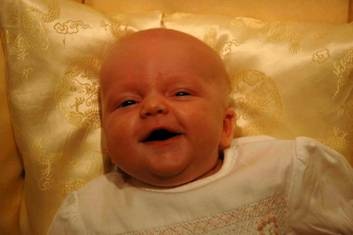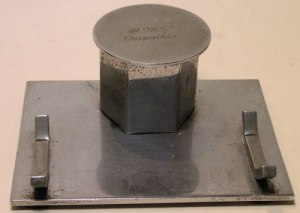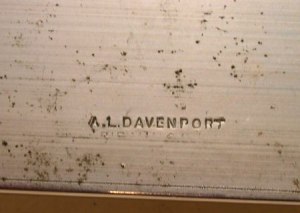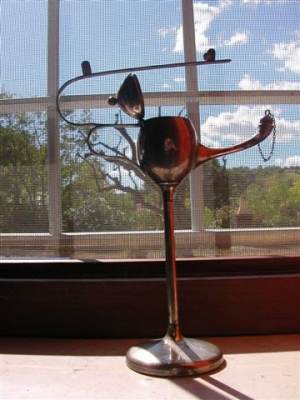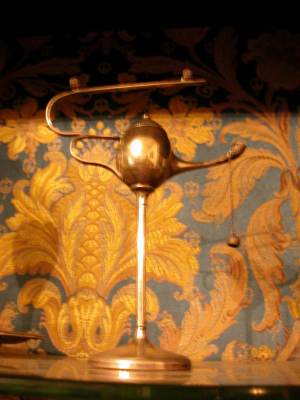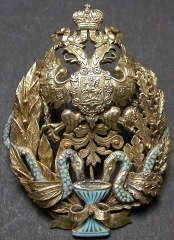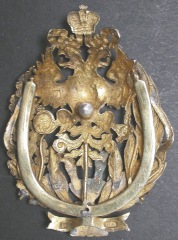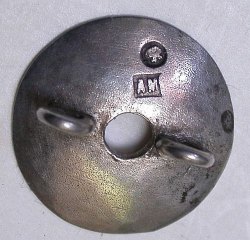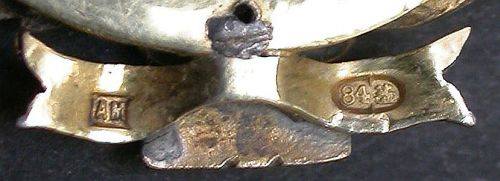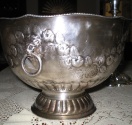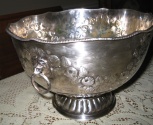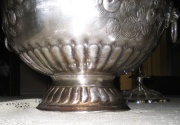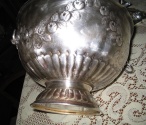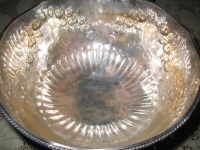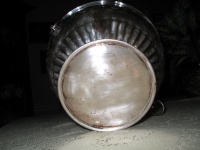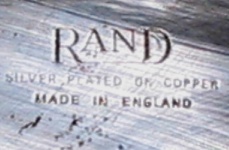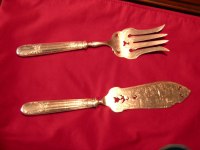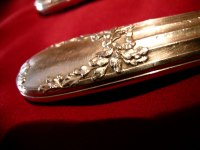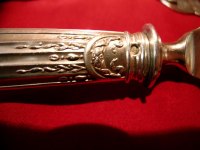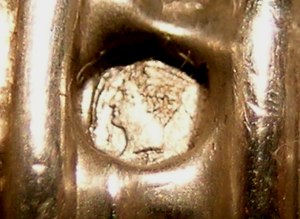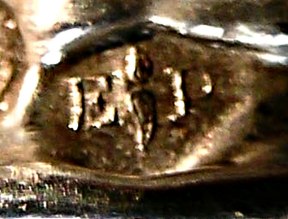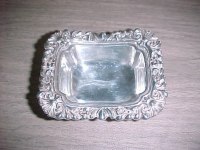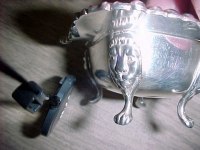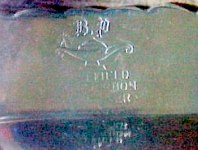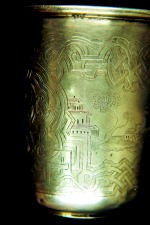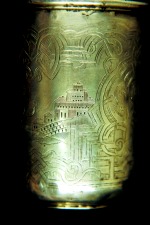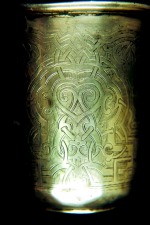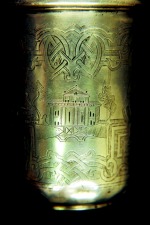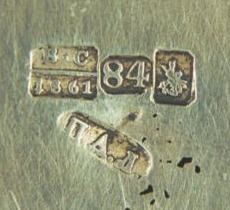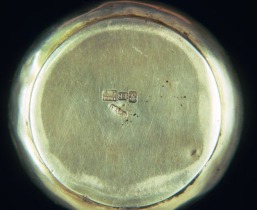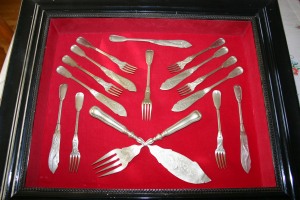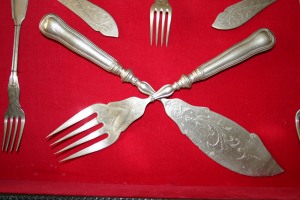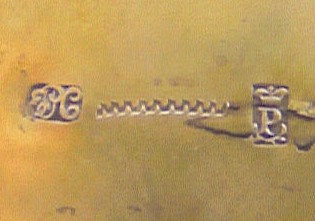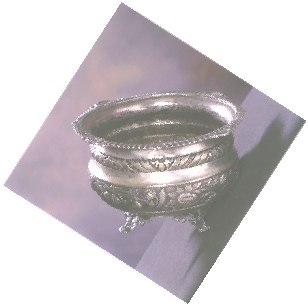 newsletter # 40 - AUGUST 2007
newsletter # 40 - AUGUST 2007www.ASCASonline.org
email: silverassociation@yahoo.it
YOUR GUIDE TO THE AUGUST NEWSLETTER:
articles new members
members' window
|
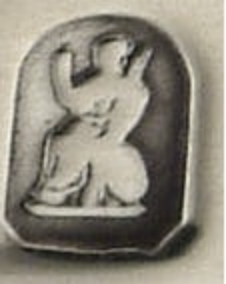 Giovanni Ciceri presents:
Giovanni Ciceri presents:Britannia silver standard hallmarks in Great Britain The Britannia silver standard (95,84% of fine silver) was introduced by a 1697 Parliament's Act signed by William III to replace sterling silver (92,5% of fine silver) as the mandatory standard for items of wrought plate. The decision was taken to limit the practice of clipping and melting sterling silver coinage (which standard was maintained to sterling) to make silverware..... click here |
New members
Welcome to new ASCAS members:
Leo A. de Haas - The Netherlands
Leslie Rubin - USA
Jeff Smith - Wales UK
Jean-Luc Stas - France
Ben Staunton - Australia
Barbara Wellman - USA
Members' Window # 40
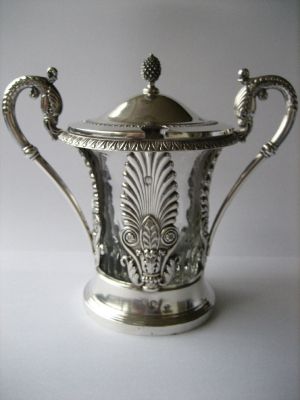
|
Mail to ASCAS: e-mail
silverassociation@yahoo.it
Wayne Garth writes:
... I was wondering if you might be able to help me in my
quest to identify an item I recently acquired. It is an R.M.S.
Carpathia inkwell and pen rest and I wanted to verify if it is
in fact a genuine item or is it a fake. It is stamped A L
Davenport on underneath of base.
I have included a picture attachment of the item.
Wayne Garth
An A L D into three squares was the sterling silver mark
registered in 1928 by A.L. Davenport of Birmingham. I don't
know if this silversmith is the maker of your inkwell, but,
obviously, your mark do not refers to a sterling silver item but
to silverplate or other non precious metal.
Giorgio Busetto
Laura Capuano writes:
.. I have a silver object marked "900" for which I do not know the origin nor the use.
I hope that someone may identify this strange
object and, possibly, its origin
Laura Capuano
Leslie Salvage writes:
... I am sending you this email with a fruit knife with
maker's mark AS. The hallmarks are for Sheffield 1910. The
condition is not good. I found it on the pavement about 50 years
ago. Would anyone know the maker's name?
Les
I believe that the maker of your fruit knife is Arthur
Worral Staniforth.
Giorgio Busetto
Fredric Sinfield submits these images of a fine Russian badge with Tsarist marks. I hope that someone of ASCAS members may supply some information about this Imperial decoration and its maker
Deda Surber writes:
... I acquired a beautiful bowl that is 10 1/2 inches
diameter, 7 inches tall and weighs 3 pounds 4 ounces. The bottom
of the bowl is stamped RAND, Made In England, Silverplate over
Copper.
I have found mention of Rand & Crane silversmiths out of Boston
in USA during the years of 1886 - 1920, and very little
information about items made by RAND in England.
Any help or advice on where to go to determine the age and
history of this piece would be greatly appreciated.
I have been hand cleaning the bowl (it is still a bit dirty),
there does not appear to be any dents or any places where the
silver is missing.
Thank you for your time and your assistance.
Deda Surber
Alessandro Colemann writes:
... I have a fish server set with French export mark (after
1879). I'm unable to identify the maker (a lozenge with E F and
an unidentified object).
Any help would be greatly appreciated.
Alessandro Colemann
Lenore Epstein writes:
... . I have two open salt dishes and two condiment dishes
with hinged lids that have the same hallmark and there are
pepper shakers to match which are unmarked. The pictures I have
enclosed are of the salt dish which measures approximately 3
3/8" x4". I do not think these are antiques. They were probably
purchased about the mid 1930's and my mother was not into
antiques.
The under side of the lip is stamped with an elaborate B.P under
which is an oil lamp with the flame on the left as you look at
it. I would describe the lamp as resembling Aladdin's or the
Genie lamps you see in fairy tales. The line under the lamp
reads Sheffield, the line under that, reproduction.
The last line the only thing readable is "er" at the end but I
think the other piece which my granddaughter has reads copper on
silver On the other side are the numbers 1, what may be a 7,
then an 8 followed by a 1. Under that is N.S.Mounts which I
think refers to the legs being silvered nickel.
I hope I have not wasted too much of your time and thank you.
Lenore
Henriette Defraine-Deconinck writes:
I contact you asking your collaboration in a research of
information about our forefather silversmiths. They were masters
"orfèvres" of Liège ( Belgium) on 17th and 18th centuries.
Their names were:
1°) Pierre de Fraisne ( le vieux) 1580- ?
2°) Pierre de Fraine ( le jeune) 1612-1660
3°) Jean Francois defraine ou defresne 1693-1751
The second is the most known and most productive. On the other
hand we do not know details signed by them except for Jean
François who signs the "I.D." during the périod when he was a
silversmith of the Cathédral of Liège ( 1721/1740).
Any information will be greatly appreciated. Contact: Madame
Henriette Defraine-Deconinck : 45 avenue Houzeau
1180 Bruxelles Belgium 02/3744493
Madame Caporale -Deconinck : 47 rue Glattignies
7300 Boussu Belgium 065/786392 ou encore par mail :
tomu04@skynet.be
Elements connus de la vie de Pierre de Fraine ou de fraisne
( le jeune )
Extrait de les délices du Païs de Liège ( Tome 5)p325
Il est né à Liège l’an 1612
Père : Pierre de Fraisne ( le vieux)
Etudes : les belles lettres
Il avait des capacités pour la culture et le dessin.
Son père lui apprit le métier de maître orfèvre et très vite il
dut s’apercevoir qu’il était très doué et décida de l’envoyer en
France puis en Italie pour parfaire son art:
France ?
Italie : 8 années(??) à Rome il travailla avec François Quesnoy
C’est avec lui qu’il apprit à réussir parfaitement dans les
tritons, les satyres et les enfants. Il travailla aussi beaucoup
l’antiquité.
Retour à Liège en 1641 il fit des pièces superbes.
Un bassin et son aiguillère retient l’attention de Monsieur
TINTENIER un des seigneurs des états généraux et bientôt sa
réputation n’était plus à faire.
Des pièces sont en France et en Hollande ?
Un vase dont l’anse était entortillée de la figure d’un homme
qui contemplait la liqueur du vase…et semblait vouloir s’y
noyer…
Un autre vase représentait un serpent qui attiré par l’odeur
d’une liqueur enchanteresse, paraissait faire des efforts pour
parvenir jusqu’à l’embouchure du vase et y plonger la tête.
Christine Reine de Suède l’attira à Stockholm et durant 7 années
produit des magnifiques pièces d’art en orfèvrerie mais aussi
des très beaux portraits en médaillons qui lui valurent de
riches présents de la part des Seigneurs de la cour.
Devenu très riche, il pensait resté là mais lors de l’abdication
de la Reine Christine elle retourna à Bruxelles et lui la
suivit.
C’est là qu’elle lui fit encore le présent de 28 diamants d’un
grand prix.
Il continua à produire des merveilles entre autre:
Une arche d’alliance pour Jean Tabolet, Chanoine de l’Eglise
Cathédrale de Liège et archidiacre de la Hesbaie.
Il mourut en 1660 n’étant âgé que de 47 ans
Crystal Stevens writes:
... . I'm trying to find the maker of this cup and can't make
out the cyrillic alphabet to give me the name. What does the B C
stand for? I understand the 84 means weight. I believe the town
mark is Moscow?
Any information would be great!
Crystal
the mark BC over 1861 is the assayer's mark of Victor
Savinkov (BC is cyrillic for VS), Moskow, 1855-1888.
84 is silver fineness 875/1000.
Information about Russian assayer's marks are available in the
Russian marks section of my private website at
http://www.silvercollection.it/trisrussiansilverhallmarks.htmlMaker's mark D.A.I. is unknown to Postnikova-Loseva book
Giorgio Busetto
Replies to questions
| Ian Cook
receives this replies to his question about his salt
cellar:
( see July Newsletter) Karin Sixl-Daniell writes: ... The salt seems to have been assayed in London in
1913-1914, although I don’t know the maker.
Giovanni Ciceri writes:
|
| John
Shields receives this replies to his question
about his silverware:
( see July Newsletter) Karin Sixl-Daniell writes: ... The Berndorf company is still in
existence in Austria today and bought the famous
company of J.C.Klinkosch in 1918. In 1918,
Berndorf was owned by Krupp (who often used
Alpacca instead of silver).
|
| Bob
Kelly receives this replies to his question
about his spoon:
( see July Newsletter) Lloyd Prator writes: ... The last mark, EP, means electroplated,
thus, what Mr. Kelly has is, unfortunately not
silver, but plated wares. If it is an extremely
heavy spoon, it might have been hotel or
restaurant flatware.
Hymie Dinerstein writes:
|
| Fred
Sinfield receives this replies to his question
about his Italian paper knife:
( see July Newsletter) Ellen Fuerst writes: ... I did a web search and found the maker
of the silver piece marked 1388 FI: Argenterie
La Torre di Buzzichello. Here's the link I
found:
http://gazzette.comune.jesi.an.it/2002/42/13.htm.
|
Martine
D'Haeseleer inform to have obtained the
reply to the question about her
Portuguese item:
( see July Newsletter) ... this silversmith from Porto in
Portugal, worked in the 19th c, he is
listed in the book of Mointinho under n.
P346 and P 347 but his name is
unidentified.
|
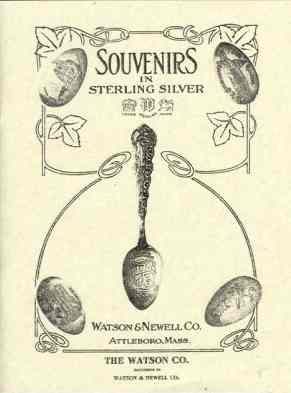
|
This
month ASCAS presents a page of "
Souvenirs in sterling silver"
from the Watson & Newell Co. -
Attleboro, Mass. 1904 catalog |
"A WORD per MONTH"
In this column
we presents an abstract from a page of
the "What is? Silver Dictionary"
courtesy of
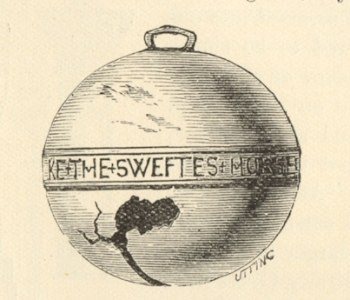
|
RACING BELLIt is a type of bell in the
form of a hollow perforated
sphere containing a loose ball
emitting a ringing sound when
shaken. Racing-bells were
awarded as prizes for horse
races in Scotland and Northern
England in the 16th and 17th
centuries.
|
Closing our AUGUST 2007 edition of ASCAS Newsletter I hope you have appreciated its content.
Your comments, suggestions and advice will be of great help.
My thanks to Laura Capuano (Italy), Giovanni Ciceri, Alessandro Colemann (Italy), Henriette Defraine-Deconinck (Belgium), Martine D'Haeseleer (Spain), Hymie Dinerstein (England UK), Jayne Dye (USA), Lenore Epstein (USA), Ellen Fuerst (USA), Wayne Garth (Australia), Robert Massart (Belgium), Lloyd Prator (USA), Leslie Salvage (England UK), Fredric Sinfield (Australia), Karin Sixl-Daniell (Austria), Deda Surber (USA), for their invaluable contributions.
Giorgio Busetto
Secretary
ASCAS is a community of
people having a common interest
in antique silver.
|
|
|

